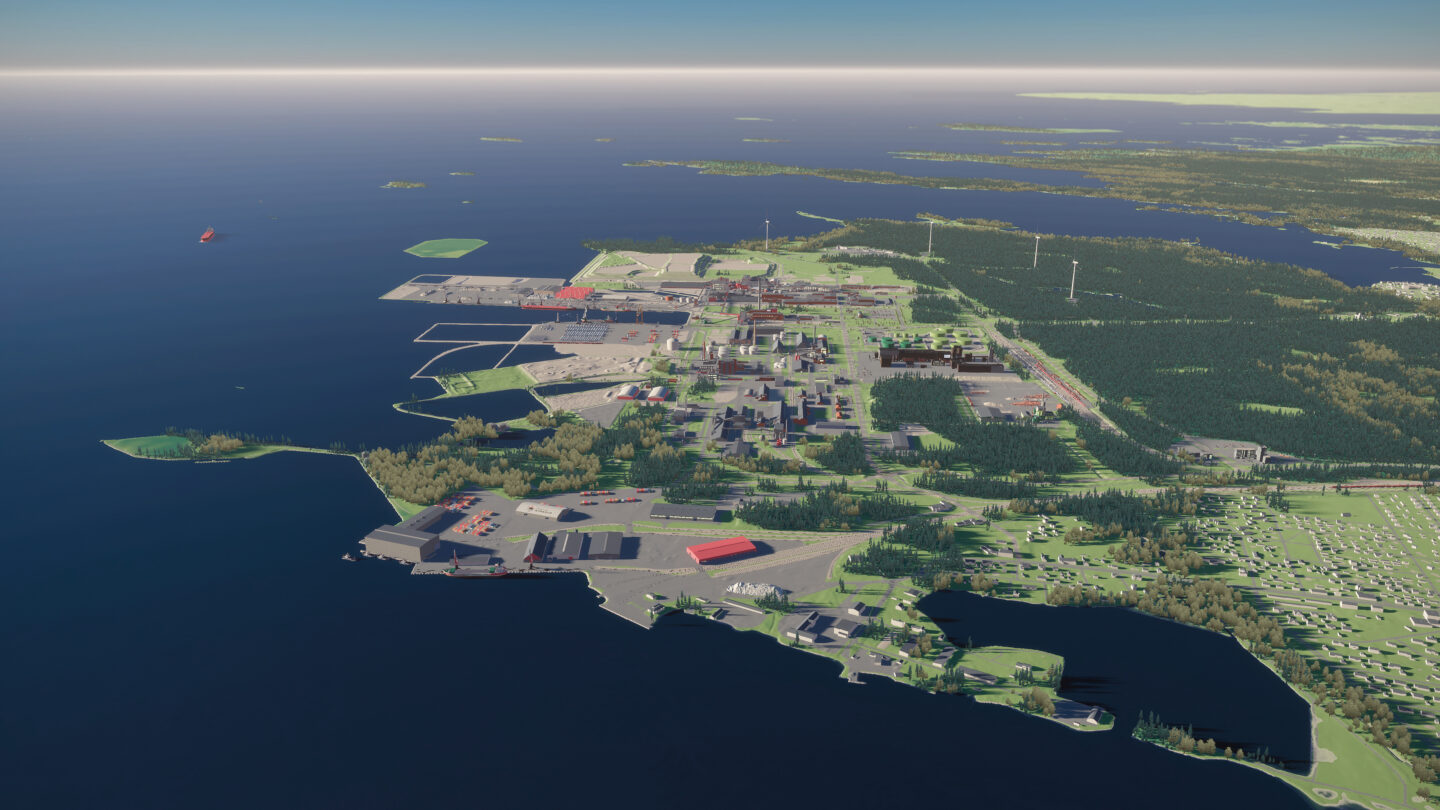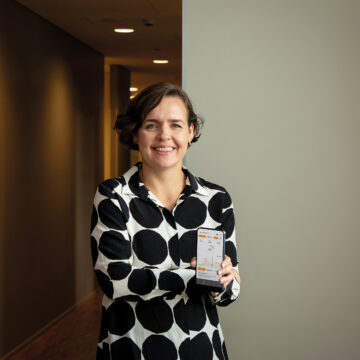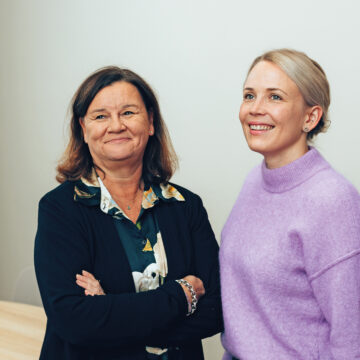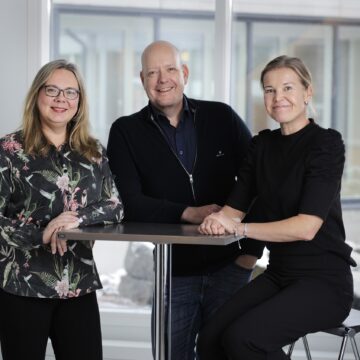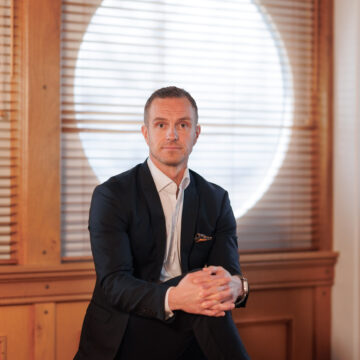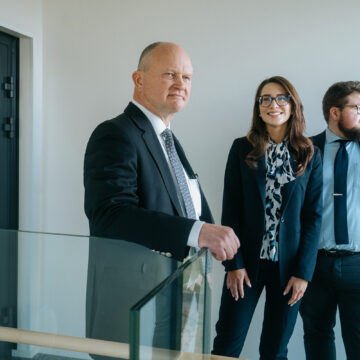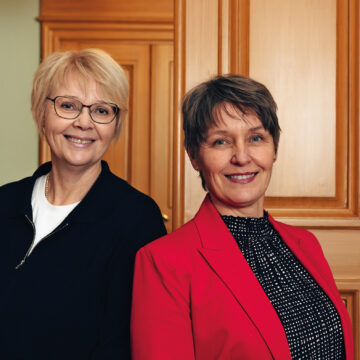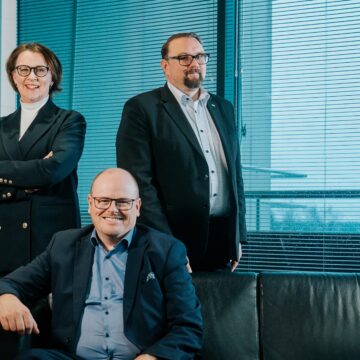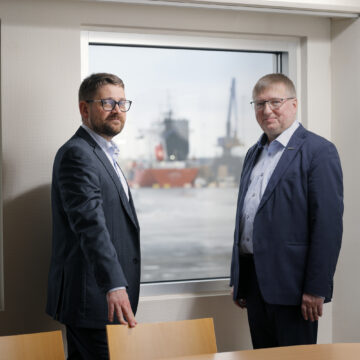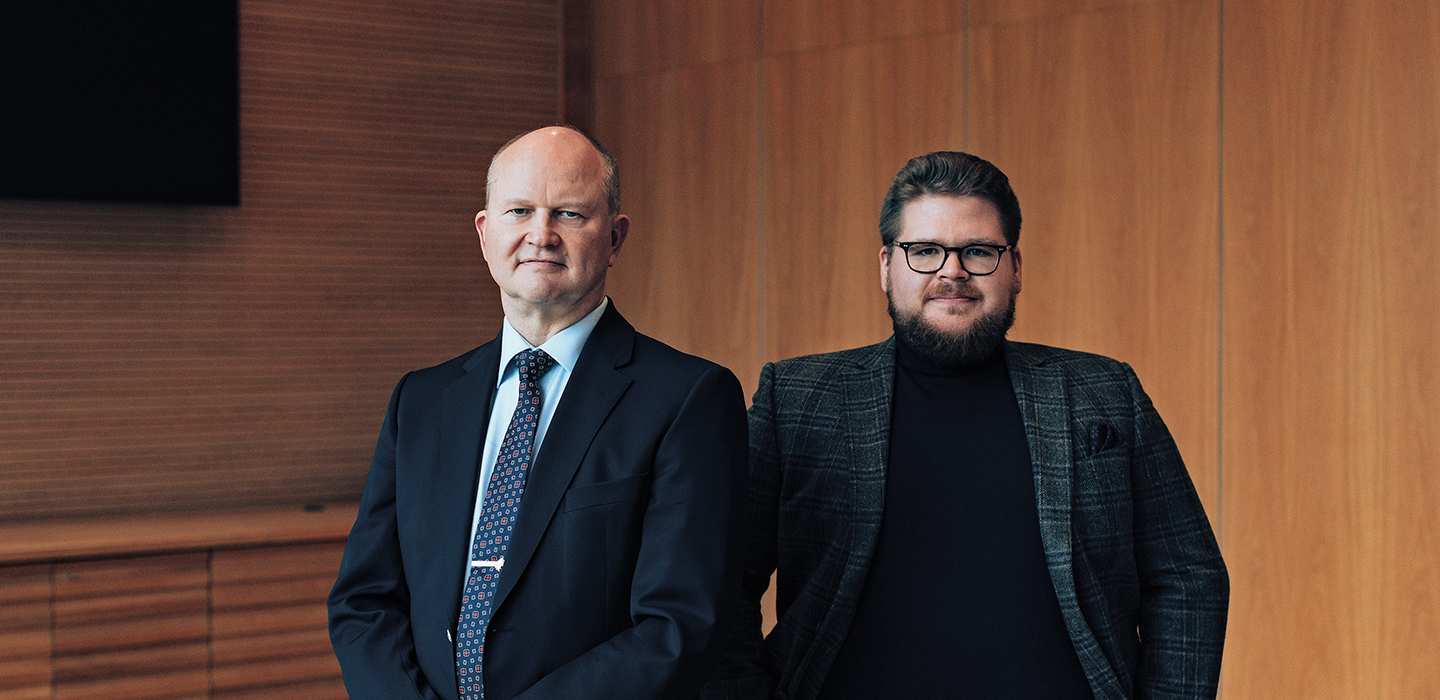
Westenergy leads a pioneering CO2 utilisation project
Westenergy is all about developing new circular economy solutions to fight climate change. In its waste-to-energy plant, 200,000 tonnes of community waste are refined into electricity, heat, and recovered materials annually. The ashes are used to manufacture, for example, metal and concrete products.
But how to utilise carbon dioxide, the by-product of energy production? At Westenergy, the answer is a next generation liquefied synthetic methane (LSNG) production plant.
“The idea is to create a carbon sink by capturing CO2 and then converting it into LSNG, which would be used to replace fossil fuels in heavy duty transport”, says Olli Alhoniemi, Managing Director.
This innovative, modular LSNG production plant complex is a joint project between Westenergy and other companies in the successful EnergySampo ecosystem that creates carbon-neutral energy solutions. The ecosystem brings together the biggest companies in the Vaasa region that operate in the energy industry.
In spring 2021, the companies that are participating in this new plant project established the EnergySampo CCU consortium. The abbreviation CCU refers to the capture and utilisation of CO2.
“The consortium is finalising funding for the project, and construction is scheduled to begin in 2023. Our goal is to start methane production in late 2025. The plant will be built next to Westenergy’s waste-to-energy plant in Mustasaari. However, the possibility of building more LSNG plants in the future has also been discussed”, states Juha Ripatti, Head of Business Intelligence at Westenergy.
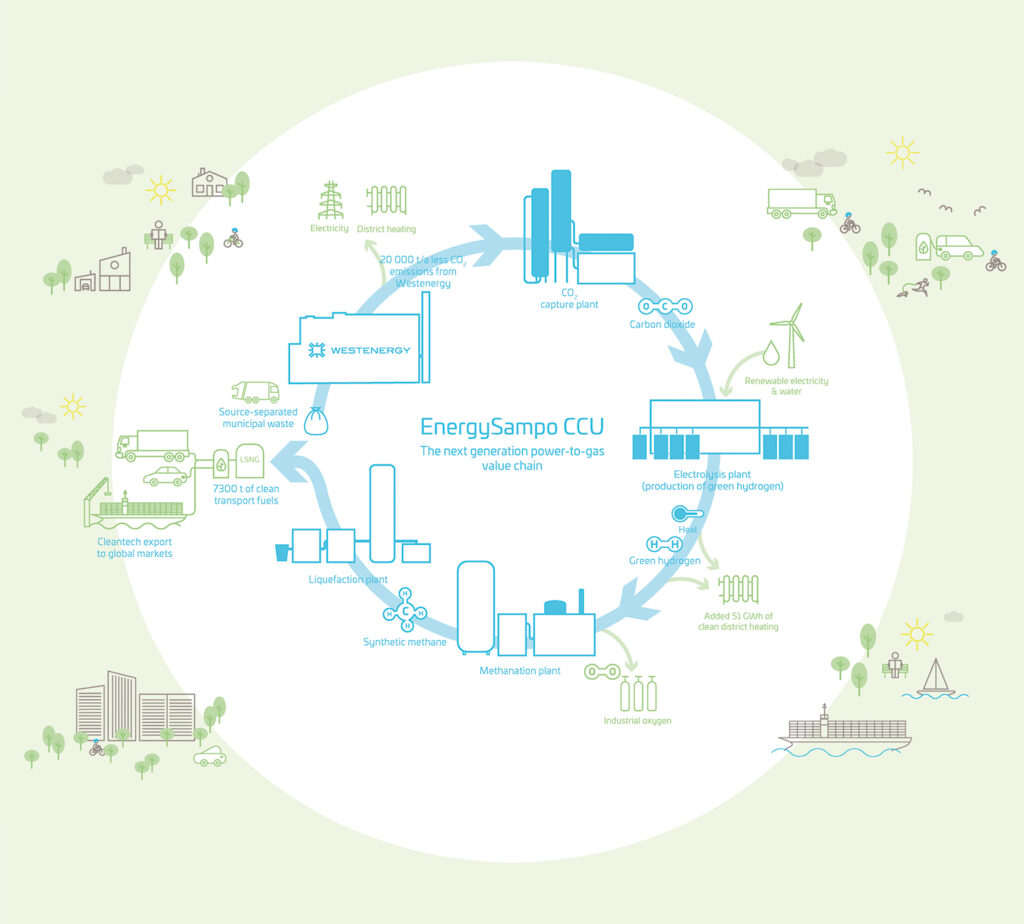
The plant complex will consist of four main processes: the capture of CO2 that the waste-to-energy plant produces, the production of hydrogen through electrolysis, the combination of hydrogen and CO2 into synthetic methane, and the liquefaction of synthetic methane into transport fuel. The whole process will be powered by wind energy.
When the LSNG production starts, about 10 percent of Westenergy’s CO2 will be captured and utilised. The volume will increase as production continues.
“In the beginning, the plant will produce 7,300 tonnes of LSNG per year. This is equivalent to the annual fuel consumption of 500 trucks, a thousand lorries, or two passenger ferries sailing between Vaasa and Umeå in the Kvarken”, says Ripatti.
The production process will also generate heat, which is going to be utilised in the local district heating network.
Our idea is to capture CO2 and convert it into LSNG that can replace fossil fuels in transport
“Our waste-to-energy plant alone produces 60 percent of the district heat in the Vaasa region. Thanks to the new plant, the percentage will rise, and the carbon footprint of district heating will reduce even more”, Ripatti notes.
Alhoniemi describes this new plant project as an essential step in Westenergy’s journey towards emission-free operations.
“Our goal is to be at least carbon-neutral, preferably carbon negative, by 2030. The new plant will reduce our fossil CO2 emissions by 25 percent.”
While there are a few other similar projects focusing on the carbon capture and utilisation in Finland, this kind of plant is rather unique on a global level.
“Finland is a forerunner in CCU solutions. We have the expertise and potential to create pioneering innovations in this field, and this project of our EnergySampo CCU consortium is an excellent example of that”, Alhoniemi says.

